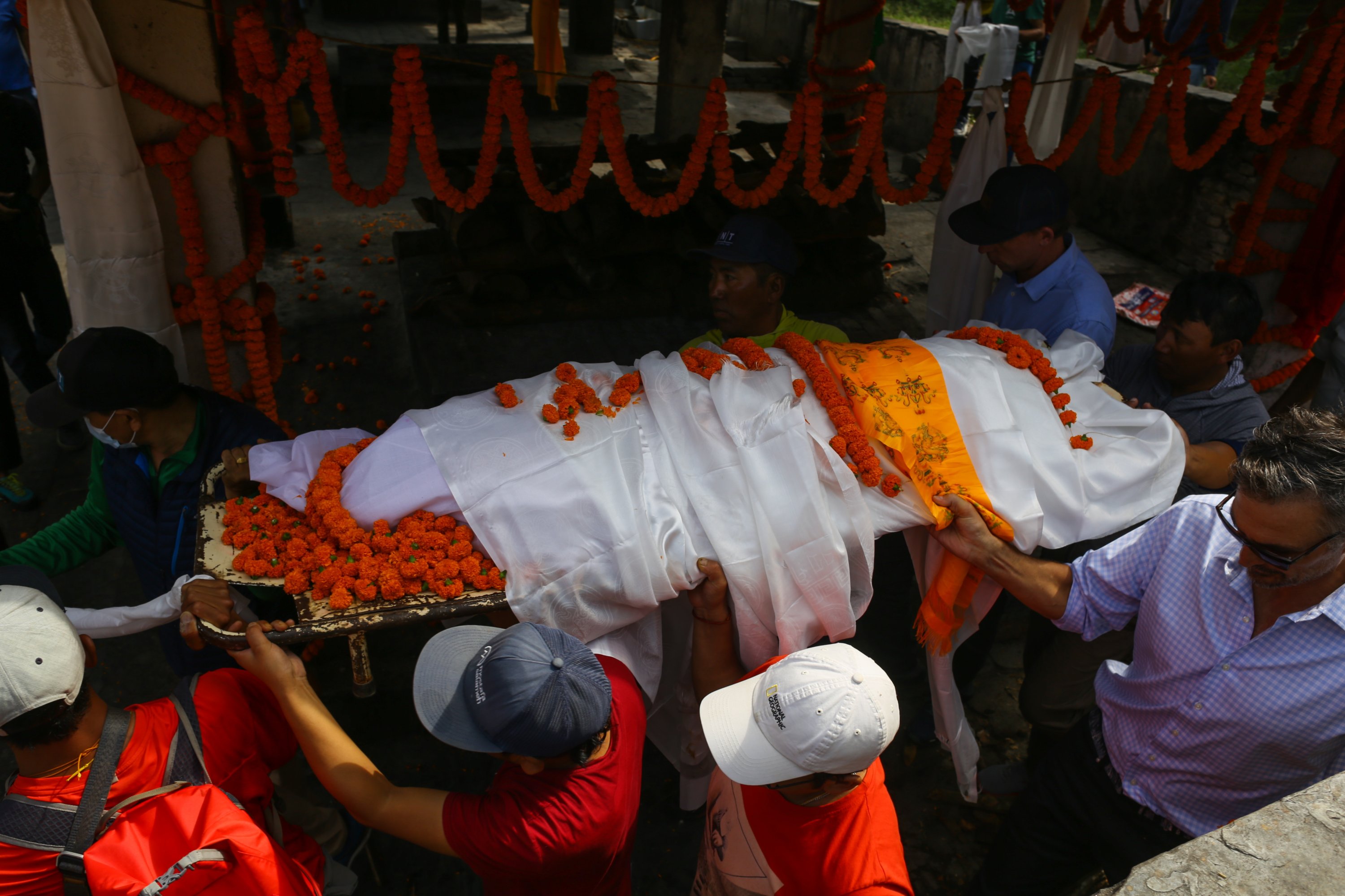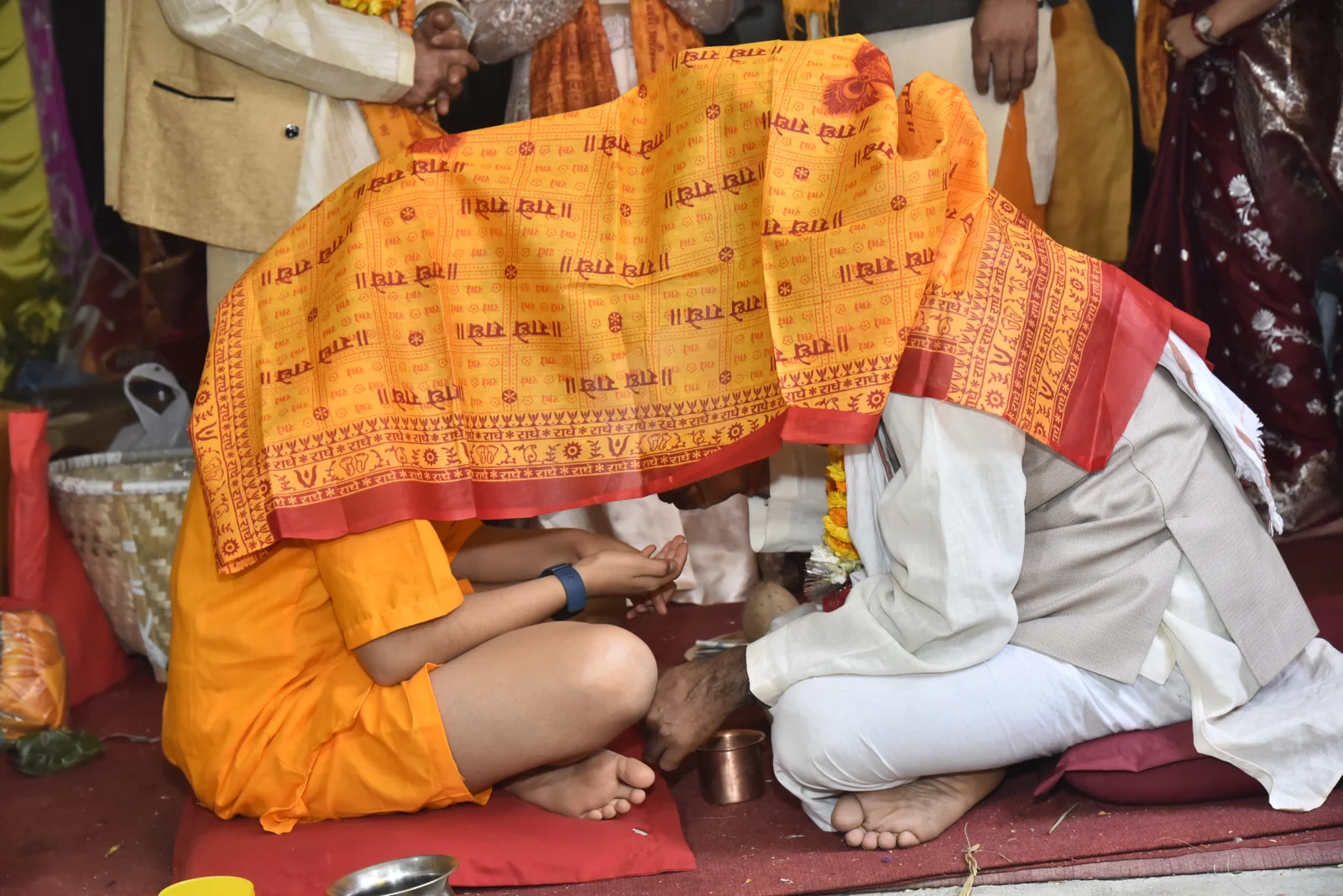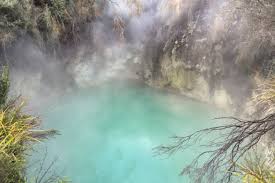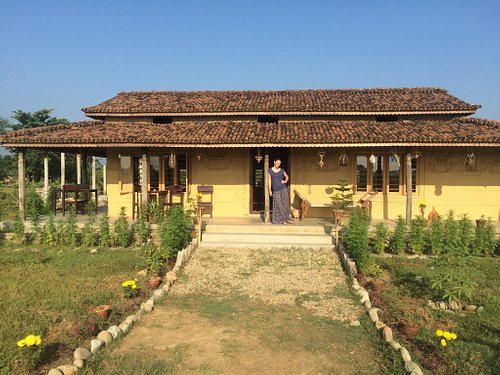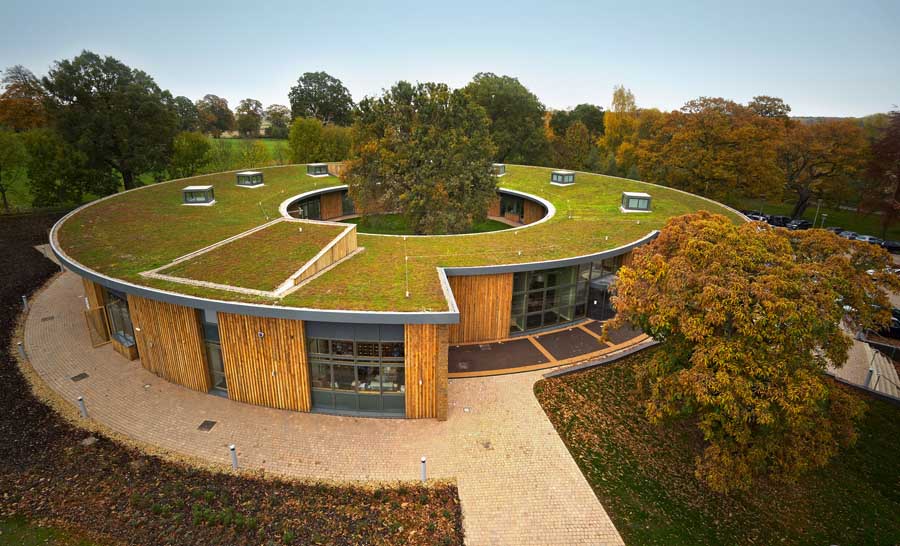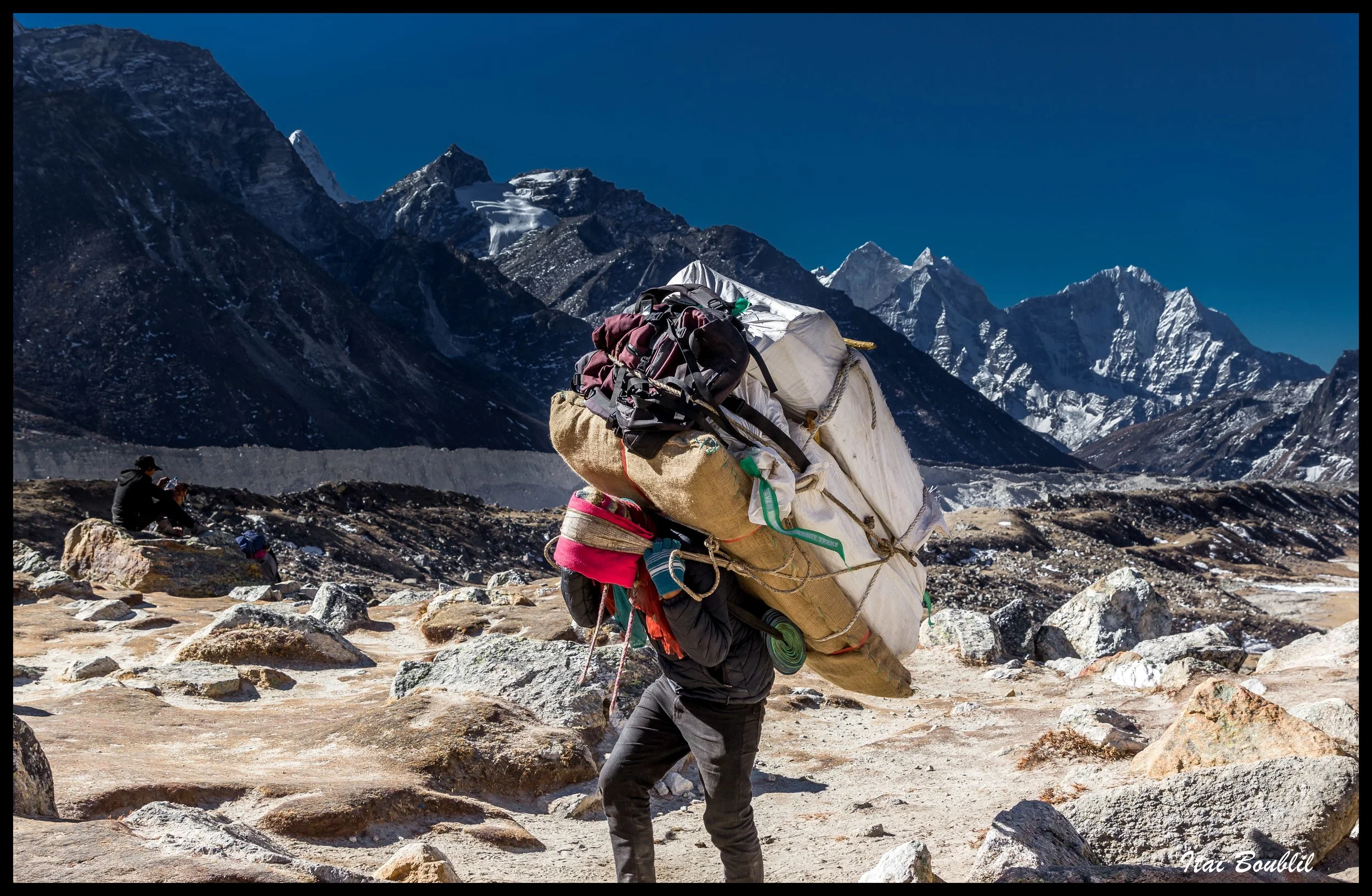Share this Article
“Disappearing in the Mist: The Ritual Bon Practices of Karnali Highlands”
Introduction
High in the rugged ridges of the Karnali Highlands, nestled between swirling clouds and the snow-fed rivers of western Nepal, a different kind of silence lingers—one filled with the echoes of ancient chants, the steady rhythm of hand drums, and the flicker of butter lamps beside weatherworn chortens. Here, far from the thunder of cities and politics, lives an old religion, older even than Buddhism in the Himalayas—the Bon tradition.
But in recent decades, the mists that have always guarded these highlands have begun to conceal more than just the landscape. The rituals, the oral chants, the masked dances, and the sacred cosmologies of Bon are vanishing into time. As monasteries crumble and elders pass, and as young generations move toward modern livelihoods, the centuries-old spiritual traditions of the Bonpo are slipping away, unrecorded, unprotected, and largely unknown outside these mountains.
This article explores the living yet endangered ritual Bon practices of the Karnali region, a place where mysticism, nature worship, and ancestral memory collide. It is a journey into the spiritual past of Nepal’s far west—one last attempt to document what remains before it fades forever into the mist.
The Bon Tradition: An Ancient Himalayan Faith
Bon, often misunderstood as merely a predecessor or rival to Tibetan Buddhism, is in fact a vast and independent spiritual system. Its roots lie in the pre-Buddhist cultures of Zhang Zhung, a kingdom that once spanned parts of western Tibet and what is now the Karnali region of Nepal. Over millennia, Bon developed complex rituals, cosmologies, deities, and practices that combined shamanism, animism, nature worship, and philosophical doctrine.
In Karnali, especially in districts like Humla, Mugu, Dolpa, and Jumla, Bon survived in its more archaic forms. Unlike the more syncretic or monastic versions practiced in Tibet today, the Bon of Nepal’s highlands remained deeply local, often entwined with seasonal agriculture, ancestral worship, spirit appeasement, and land rituals.
A World of Spirits and Mountains
To understand Bon in the Karnali Highlands, one must enter a universe alive with spirits. The landscape itself is sentient and sacred. Every peak, river, forest, and pass is home to unseen beings—lha (sky spirits), klu (serpent deities), tsen (wild spirits), and gyalpo (territorial kings of the spirit realm). Illness, misfortune, or failed harvests are often believed to result from the displeasure of these spirits.
Thus, ritual Bon practice revolves around constant negotiation with these forces:
- Appeasement of klu to prevent landslides or floods.
- Invocations to lha for blessings on livestock.
- Exorcisms to drive out malevolent tsen from a sick child’s body.
- Offerings to mountain deities before crossing high passes.
In this spiritual ecology, the Bonpo lama—a ritual priest trained in sacred chants, incantations, and protective rites—acts as the mediator between human and spirit worlds.
The Bonpo Lama: Custodian of Ritual Knowledge
Unlike the celibate monks of Buddhist monasteries, most Bonpo lamas in Karnali are householders. They inherit the spiritual mantle through family lines, learning their craft from fathers, uncles, or grandfathers. Training often begins in childhood and includes memorizing long oral texts, mastering symbolic hand gestures (mudras), constructing ritual mandalas from colored powders, and learning the proper use of ritual instruments like the dungkar (conch), nga (drum), and kangling (human thighbone trumpet).
The Bonpo lama holds many roles in the community:
- Diviner of omens and astrological calendars.
- Healer of spiritual afflictions.
- Performer of life-cycle rituals—birth, marriage, death.
- Protector of fields and livestock through seasonal rites.
- Storyteller, historian, and spiritual anchor.
Yet today, fewer young people are willing to endure the long apprenticeship. The knowledge, passed orally and ritually, vanishes with each elder who dies without a successor.
Sacred Sites and Shrines of the Mist
Bon practices in Karnali are not confined to temples. In fact, many rituals take place in wild or open spaces—on mountaintops, at forest clearings, or beside sacred lakes.
Some of the most sacred sites include:
Lake Rara (Mugu)
- Considered home to powerful water spirits.
- Pilgrims circle the lake during the full moon to gain spiritual merit.
- Bon lamas perform sang rituals—smoke offerings—to cleanse the lake’s energies.
Mount Kanjirowa (Dolpa)
- Associated with lha spirits and protective mountain deities.
- Offerings of barley flour, yak butter, and juniper are made at its foothills before crossing high passes.
Chorten and Mani Walls
- Bon chortens differ from Buddhist ones by their counter-clockwise circumambulation.
- Sacred inscriptions are written in the Bon language or in Tibetan with the mantra Om Ma Tri Mu Ye Sa Le Du, central to Bon practice.
These sites, long kept secret and protected by oral lore, are increasingly visited by outside trekkers, altering the energy and sometimes causing local resentment when rituals are disrupted.
Ritual Calendars and Seasonal Ceremonies
The Bon calendar is deeply tied to agricultural and pastoral life. Ceremonies mark each critical phase of the year.
Lha Gyor – New Year Cleansing Ritual
- Held in winter to remove the year's accumulated misfortunes.
- Involves effigy burning, spirit expulsion, and sang offerings.
Chya Sowa – Field Purification Ceremony
- Performed before planting season to ensure fertile soil and spirit cooperation.
- Lamas offer grains, milk, and incense to land spirits.
Tsewang Rituals – Life-Extension Chants
- Long recitations believed to extend the life force (tse) of participants.
- Accompanied by torma offerings (sacrificial effigies made from barley flour).
Death and Sky Burial
- Bon death rituals emphasize guiding the consciousness through the bardo (intermediate state).
- In some regions, sky burial practices are still observed—leaving the body on mountaintops to return to nature.
Each of these rituals requires days of preparation, memorized chants, and specific lunar timings. Losing the rituals means losing the community’s rhythm and spiritual connection to nature.
Oral Epics and Protective Chants
Central to Bon tradition are the zhyid—long oral chants that tell the stories of gods, spirit wars, and the origin of the cosmos. Recited during rituals or festivals, these epics are part history, part myth, and part magical spell. Few of these chants have ever been written down.
Chants often serve dual purposes:
- Narrative: Describing the journey of deities like Tonpa Shenrab (the Bon founder).
- Protective: Invoking divine energy to shield a village or drive out demons.
Chants are performed in a unique style—half-sung, half-spoken—with hand gestures, drumbeats, and incense smoke punctuating the rhythm. The chants, passed orally, are fragile—vulnerable to forgetting, distortion, and extinction. Today, only a few aging lamas can perform them in full.
The Decline: What’s Driving the Disappearance?
Several forces are contributing to the decline of ritual Bon practices in the Karnali Highlands:
Modern Education and Outmigration
- Children of Bonpo families are encouraged to pursue secular education.
- Youth migrate to Kathmandu or abroad, breaking the chain of transmission.
Lack of Written Documentation
- Much Bon knowledge remains oral and esoteric.
- There are few institutional efforts to document or archive practices in Karnali.
Religious Competition
- Tibetan Buddhist influence, particularly from the Gelug and Nyingma sects, has spread in recent decades.
- Bon is sometimes dismissed as “pagan” or “superstitious” even within the Himalayan spiritual world.
Tourism and Development
- Infrastructure projects and trekking tourism disturb sacred sites.
- Sacred groves, sky burial grounds, and meditation caves are destroyed or disrespected.
State Neglect
- Bon is not officially recognized as a distinct religion in many cultural inventories.
- Cultural heritage projects often overlook Bon practices in favor of more prominent Buddhist monuments.
Glimmers of Survival and Resistance
Despite the losses, there are flickers of revival and resilience:
Community-led Documentation
- In Mugu and Dolpa, small groups of Bonpo lamas are recording oral chants using smartphones.
- Elders are conducting workshops for local youth during winter months.
NGO and Research Collaboration
- Projects like the Himalayan Bon Archive and scholars from Tribhuvan University are slowly mapping Bon sites and rituals.
- Audio recordings and video documentation are underway, though limited in scope.
Cultural Festivals
- Some villages organize annual Bon festivals to keep rituals alive.
- Masked dances, drum processions, and torma displays draw both locals and returning migrants.
Monastic Revitalization
- A few Bon monasteries like Samling Gompa (Dolpa) have received foreign aid for renovation.
- Young monks are beginning to learn both traditional chants and modern skills like archiving and video editing.
These efforts remain fragile and under-resourced, but they mark the first steps toward keeping the mist from claiming this ancient tradition entirely.
Conclusion: The Last Chants in the Clouds
The Bon rituals of Karnali Highlands are not just cultural artifacts. They are living embodiments of a worldview that sees the earth as sacred, the air as inhabited, and the human soul as deeply bound to the landscape. In their chants, dances, and rituals, the Bonpo offer an ecological and spiritual ethic urgently needed in today’s fragmented world.
Yet these traditions balance on a knife’s edge. Each time a Bonpo lama passes without a successor, each time a chorten is bulldozed or a sacred chant forgotten, the mists thicken.
It is not too late—but it soon will be. The world must turn its attention not only to preserving temples and artifacts but also to nurturing the invisible, living threads of ritual knowledge still held by elders in Karnali.
If we listen carefully in the highlands—beyond the silence of the fog—we may still hear the drumbeat of Bon. But we must act before even that echo disappears into the mist.
Categories:
Travel & Tourism
,
Culture & Traditions
,
Adventure Activities
,
Nature & Wildlife
,
History & Heritage
,
Lifestyle & Local Life
,
Health & Wellness
,
Education
,
Spirituality & Religion
,
Food & Drink
,
Festivals & Events
,
Photography & Arts
,
Sustainable Development
,
Hiking Destinations Around Kathmandu
,
Traditional Tools and Utensils
Tags:
asdasd
,
Thamel
,
nagi gumba
,
sundarijal
,
dashain
,
festival of nepal
,
bada dashain
,
traditional food
,
traditional-drink
,
murchunga
,
nepalese music
,
traditional instruments
,
tradition
,
architecture
,
holi
,
national park
,
chitwan national park
,
unesco heritage sites
,
nepal wildlife
,
biodiversity conservation
,
rudraksha
,
bhojpatra
,
phewa lake
,
religious destination of nepal
,
rara lake
,
gosaikunda trek
,
craft
,
tilicho
,
begnas
,
pokhara
,
dolpa
,
Phoksundo Lake
,
tools
,
tribe
,
ethnicity
,
raute


